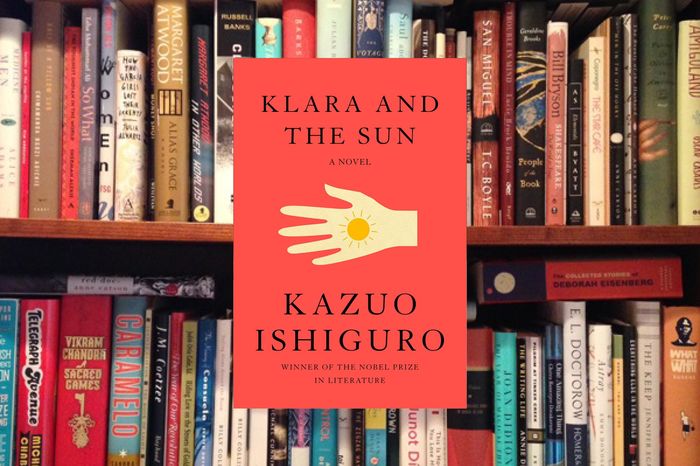So, what is an ‘accidental Renaissance’?
Discovering a likeness between contemporary photographs and century old paintings, Isabel Sebode delves into the world of the ‘accidental Renaissance’ phenomenon

When the American Capitol in DC was stormed at the beginning of January, one thing struck me as particularly odd: the pictures taken of the event seemed bizarrely artistic, beautiful and mysterious in their alignment. The grand scenes of human anger, violence, and disruption coalesced with the architecture of the building into a distinctly harmonious piece. Alternatively, sitting at my desk at night with my lamp on, pen in hand and paper in front of me, I myself feel like part of a composition, a carefully arranged depiction of a scholar engrossed in her work.

Looking through my phone I find a picture of my friend on a ledge, sleeping with the arch of the ceiling above him and the fairy-lights illuminating the dark room – a dimness only brought to life by the plants surrounding him. All of these prosaic images exert a beauty, an indulgent aestheticism that I couldn’t put my finger on until I unearthed their common artistic denominator: all of these 21st century images radiate a Renaissance atmosphere, perfected by Caravaggio and his contemporaries.
Accidental Renaissance: A phenomenon concerned with photographs taken without any premeditation, but which resemble Renaissance paintings.
Why is it that the Capitol, my late-night studies and kitchen flowers are all united in their shared aesthetic appeal? How come that the Renaissance itself is reborn through the lens of my phone camera? Significantly, all of these images share the Renaissance technique known as ‘chiaroscuro’. This is a stark contrast between dark and light, usually coming from a light source beyond the picture. This results in a painting of the style of the 1628-1630 ‘Man seated reader at a Table in a Lofty Room’ by a follower of Rembrandt.

In a curiously similar style, I have taken a picture of a set of stairs by Regent’s Canal in winter. The source of light is disguised yet traceable, illuminating the stairs and some of the greenery whilst the rest of the photograph remains cast in darkness. A scene not abnormal but rather prosaic is aestheticised through the stark contrast of light, subduing the colours and attributing a strangely philosophic character to the stairs that leads into nowhere.
Beyond the chiaroscuro it is the drama in the daily that completes a Renaissance-esque photograph. Unlike Renaissance paintings, it less common for us to view our world through a framework marked by grand buildings and human crowds engaged in a shared conflict. This is precisely why images of protests, tragedy, and contemplation radiate a detached atmosphere; a depth of feeling emanates from each character involved in the picture, welcoming a symbolically-loaded narrative into the scene. Rather than seeing humans walking on the street, physically and mentally distanced from each other, it is the invisible connection between them that makes the photographic compositions appear so artistically arranged.
The following picture taken during the storming of the US Capitol reveals what seems to be a study of the human body as it climbs up the building. Most people in the photograph direct their attention towards the climbing man, others are occupied differently. If we take the man in the bottom left corner taking a picture of the person taking this picture, we witness a meta-artistic awareness of the photograph as a medium. Refiguring the painter’s preoccupation with the form of the painting, this photograph reflects a Renaissance atmosphere due to its artistic self-awareness as well as its depiction of humans as characters in a study, cast in subdued colours.
“art is founded on life, yet we see the beauty of life through a lens of the arts”
In an article for the Washington Post, Kelsey Ables comments on the dramatic qualities of the pictures that capture the Trump-era. Many of them echo with a spirit of the accidental Renaissance, as objects such as wooden ballot boxes are highlighted and transformed into a pseudo-religious relic. It is the persisting emotionality in many of these images, the religiously reverberant scenes of elections and Congress that make the structures of the electoral and legal system appear somewhat biblical. Central to the Trump-era photos is a universally felt sense of doom, or at least of anxiety about what the future may hold in the current political climate. The photos thus seem deeply artistic as they capture the eeriness and anticipation of the unknown in their compositions of light and dark and what seems like ritualistic human behaviours.
Thus, we return to the age-old question: does art imitate life, or life imitate art? What the trend of the accidental Renaissance photographs suggests is that art is founded on life, yet we see the beauty of life, even in its strangest moments, through a lens of the arts.
 Comment / Cambridge students are too opinionated 21 April 2025
Comment / Cambridge students are too opinionated 21 April 2025 Interviews / Meet the Chaplain who’s working to make Cambridge a university of sanctuary for refugees20 April 2025
Interviews / Meet the Chaplain who’s working to make Cambridge a university of sanctuary for refugees20 April 2025 News / News in brief: campaigning and drinking20 April 2025
News / News in brief: campaigning and drinking20 April 2025 Comment / Cambridge’s tourism risks commodifying students18 April 2025
Comment / Cambridge’s tourism risks commodifying students18 April 2025 Comment / Cambridge’s gossip culture is a double-edged sword7 April 2025
Comment / Cambridge’s gossip culture is a double-edged sword7 April 2025







